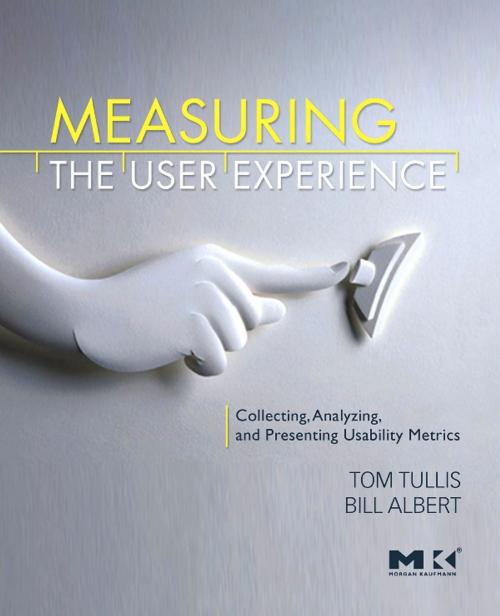Measuring the User Experience
Collecting, Analyzing, and Presenting Usability Metrics
Nonfiction, Computers, Advanced Computing, Programming, User Interfaces, Operating Systems, General Computing| Author: | Thomas Tullis, William Albert | ISBN: | 9780080558264 |
| Publisher: | Elsevier Science | Publication: | July 27, 2010 |
| Imprint: | Morgan Kaufmann | Language: | English |
| Author: | Thomas Tullis, William Albert |
| ISBN: | 9780080558264 |
| Publisher: | Elsevier Science |
| Publication: | July 27, 2010 |
| Imprint: | Morgan Kaufmann |
| Language: | English |
Effectively measuring the usability of any product requires choosing the right metric, applying it, and effectively using the information it reveals. Measuring the User Experience provides the first single source of practical information to enable usability professionals and product developers to do just that. Authors Tullis and Albert organize dozens of metrics into six categories: performance, issues-based, self-reported, web navigation, derived, and behavioral/physiological. They explore each metric, considering best methods for collecting, analyzing, and presenting the data. They provide step-by-step guidance for measuring the usability of any type of product using any type of technology.
• Presents criteria for selecting the most appropriate metric for every case
• Takes a product and technology neutral approach
• Presents in-depth case studies to show how organizations have successfully used the metrics and the information they revealed
Effectively measuring the usability of any product requires choosing the right metric, applying it, and effectively using the information it reveals. Measuring the User Experience provides the first single source of practical information to enable usability professionals and product developers to do just that. Authors Tullis and Albert organize dozens of metrics into six categories: performance, issues-based, self-reported, web navigation, derived, and behavioral/physiological. They explore each metric, considering best methods for collecting, analyzing, and presenting the data. They provide step-by-step guidance for measuring the usability of any type of product using any type of technology.
• Presents criteria for selecting the most appropriate metric for every case
• Takes a product and technology neutral approach
• Presents in-depth case studies to show how organizations have successfully used the metrics and the information they revealed















